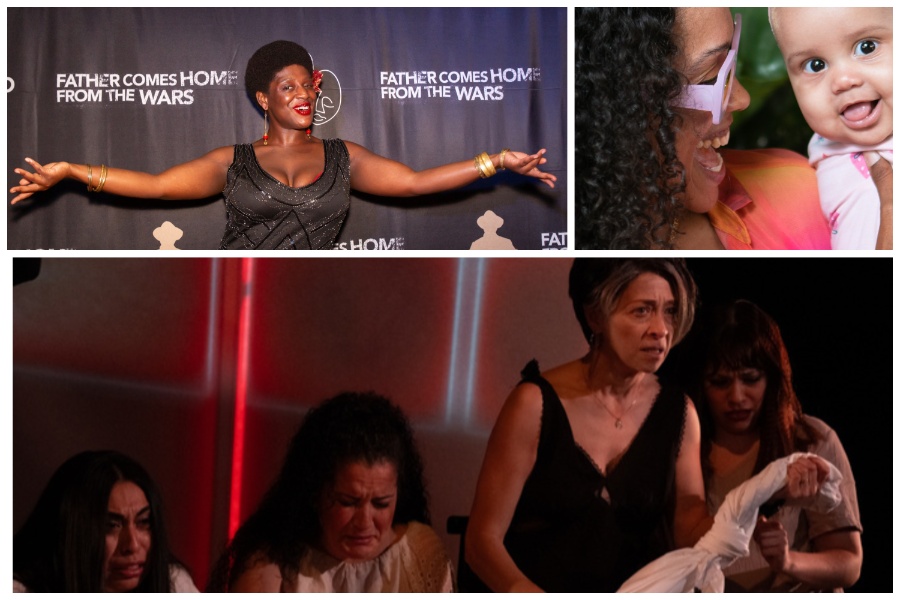In a nation where the arts and education are under attack, it’s more than vital ever for young people to have opportunities to explore the arts with organizations that offer after-school learning, especially low-income and diverse populations that may not have the opportunity otherwise. A recent study from the Wallace Foundation, “Well-being and Well-becoming Through the Arts: A Picture of Mattering for Youth of Color, explores the values, goals, program design, and impact of such culture-centered, community-based youth arts (CCYA) programs.
By design, these are programs that integrate arts learning with community-based youth development practices and culturally sustaining approaches. The Wallace report identifies seven characteristics and positive youth outcomes contributing to “well-being” and “well-becoming,” including:
- Nurturing artistic skill by providing creative communities that develop skill and confidence in the arts
- Cultivating creative restoration by engaging youth’s minds and bodies in creative expressions that promote positive emotions
- Establishing artful sanctuaries for connection with artistic peers and adults
- Fostering generative connections by engaging deeply with broader communities through performance and resource sharing
- Highlighting meaningful pathways into becoming an adult who appreciates and values the arts
- Promoting cultural visibility by acknowledging, affirming, and celebrating the past, present, and future of people of color
- Emphasizing equity intentionally by disrupting racial and economic barriers to arts experiences for youth of color
The report’s 18-month, multi-method study spanned 35 CCYA programs across Atlanta, Chicago, Detroit, Louisville, Newark/Paterson, Oakland, and Tacoma. Here are some stories that show these principles in practice, creating youth well-being and well-becoming, and their lasting effects.

Freedom and Fun First
Mosaic Mobile provides micro workshops at schools, meeting students in grades 3-8 where they are for a taste test of the Mosaic Youth Theatre experience in performance, devising, songwriting, design, dance, and more. It’s designed to create supportive environments for students with little experience to explore theatrical possibilities.
According to school and community programs specialist Andaiye Spencer, a certified teacher who supervises the program, they offer “freedom, fun, liberation, and voice firsthand, a gateway to a whole new thing. We’re letting them see all the different jobs in theatre, introducing them to careers they didn’t know existed, and integrating who they are and where they live.”
Mosaic Mobiles, as they are called for short, started with the goal of reaching new communities after receiving a grant during the pandemic. The company later began to accompany touring productions and expanded from one workshop to nearly 20 through partnerships with schools and community programs. Most Mobiles create devised pieces and emphasize Mosaic’s agreements of safety, respect, responsibility, participation, and mutual support.
“We have to get out in the community in places where they’ve never seen a play or been in a play before or know what a play is,” Spencer said, adding that transit is one issue for students to get to the theatre. “Some haven’t even done concerts, because post-pandemic schools are struggling to get arts education back. Being that first line is daunting, but it also makes it easier to give them the ‘taster’ version.”
Workshops align with ELA, SEL, and PBIS standards. For example, with a Detroit Achievement Academy class reading Peter Pan, students rewrote portions from the book as scenes, creating their own “Neverlands” and alternate villains. The process used their curriculum’s literature, and, as Spencer put it, “let them be who they wanna be and create what they wanna create. When we go in during the day, we’re supporting and supplementing instruction time. In one day or a whole series, they’re finding growth and strength, where in school, they may not feel confident.”
Spencer said that Black students feel seen when she and fellow Black artists Gregory Miller and Tayler Jones go into schools. Spencer has her students draw their favorite things about the workshop, joking that students used to make drawings of her, but more recently they’ve switched to drawing Miller (“I was like, ‘Oh, him? Fine’”). “But it’s important to come in and be an example that people that look like them are able to make art.”
Miller gave the fifth graders in his history residency with Detroit Community Elementary the opportunity to sing and step dance in the company’s student matinee show, All Hail, a contemporary retelling of Shakespeare’s Julius Caesar by Mosaic alum and University of Michigan professor Shavonne Coleman, which ran May 9-18.
The goal is to follow the full pipeline from Mosaic Mobile to summer camps, to ensembles, to the company’s development programs for college and career readiness, to their New Voices playwriting and composing program, and to future lives in the theatre. Mobiles will continue over the summer to encourage students to audition for ensembles.
“The point is to change the world, to change the system and fill the gap,” said Spencer. “Having Mosaic as an avenue and conduit to go out to communities and say, ‘Hey, there’s this whole other world,’ then having them continue the journey. You’re part of the Mosaic family and we’ll be looking out for you. It’s similar to what’s happening on a bigger scale on-site in shows.”

From Overlooked to Engaged
At Chicago’s Professional Youth Theatre and Dance Academy (PYTDA), Black and brown youth in under-resourced schools can take after-school, in-school, and summer classes in music, theatre, dance, and spoken word. Its teaching artists are trained professionals of color, allowing students to learn, grow, and thrive. Their students gain transformative arts education, renew their motivation to stay in school, and pursue theatrical careers through the Academy Students program, which provides specialized training for college and professional life.
No matter whether students go on to pursue careers in theatre or keep it as a mode of expression, the program works “directly to support skill development and physical and mental health for our students as well as supporting their future success,” said board president Ahava Silkey-Jones. “By focusing on the whole child, we are able to ensure they leave school with a well-rounded sense of themselves, confidence in their skillset, and strong relationships with peers and adults.”
Though the Wallace researchers admitted that the data and survey process was imperfect in this case due to some difficulty getting partner schools to participate, the responses they did receive had students reporting feeling more confident, more connected, and more engaged as a result of programming. Students started at their schools feeling shy, overlooked, underestimated, and overcoming traumatic experiences. AT PYTDA, they found outlets for healing journeys and discovering their voices, and some alumni have gone onto professional opportunities. (One auditioned for a film about Josephine Baker; another majors in dance at Columbia College of Chicago and works on professional theatre and TV, including a documentary with BET.)
At a recent student performance combining multiple art forms and experience levels at Higgins Academy, leaders from the youth-serving organization Urban Gateways attested to PYTDA’s transformational impact.
“What those young people accomplished and shared was breathtaking,” said Christopher Rapisarda, managing director of programs at Urban Gateways. “I was so impressed with the group, the varied art forms represented, and the engagement from the students.”
“Moments like these remind us that the arts are essential,” Silkey-Jones said. “Many of our students begin the program unsure of themselves and leave with the skills and confidence to perform, pursue college, and lead in their communities.”
It’s clear from these examples that social and cultural histories that aren’t necessarily arts-specific—including legacies of racism and marginalization in the form of gentrification, transportation, regional demographic shifts, and disparate school resources—powerfully shape CCYA programs and the needs they address. Diverse and supported teaching artists leading these programs have accordingly shaped diverse programs, as well as access to programs and collaborations that intertwine communities and programs. And they show that bringing the arts to the community makes all the difference in making theatre a lifelong possibility.
Daniella Ignacio, a writer, theatre artist, and musician based in Washington, D.C., is a contributing editor of this magazine.
Support American Theatre: a just and thriving theatre ecology begins with information for all. Please join us in this mission by joining TCG, which entitles you to copies of our quarterly print magazine and helps support a long legacy of quality nonprofit arts journalism.
Related

Making Friends With the Arts and Each Other
A new Wallace-commissioned report looks at various ways arts learning can connect and sustain young people.
In "Features"
New Wallace Foundation Program Targets Audience-Building
New $52-million effort will support and study the audience-development work of 26 arts organizations, including 8 theatres.
In "Mid Atlantic"

The Big Orange Door of Opportunity
How an L.A. arts education center empowers young people to imagine new possibilities.
In "Features"





